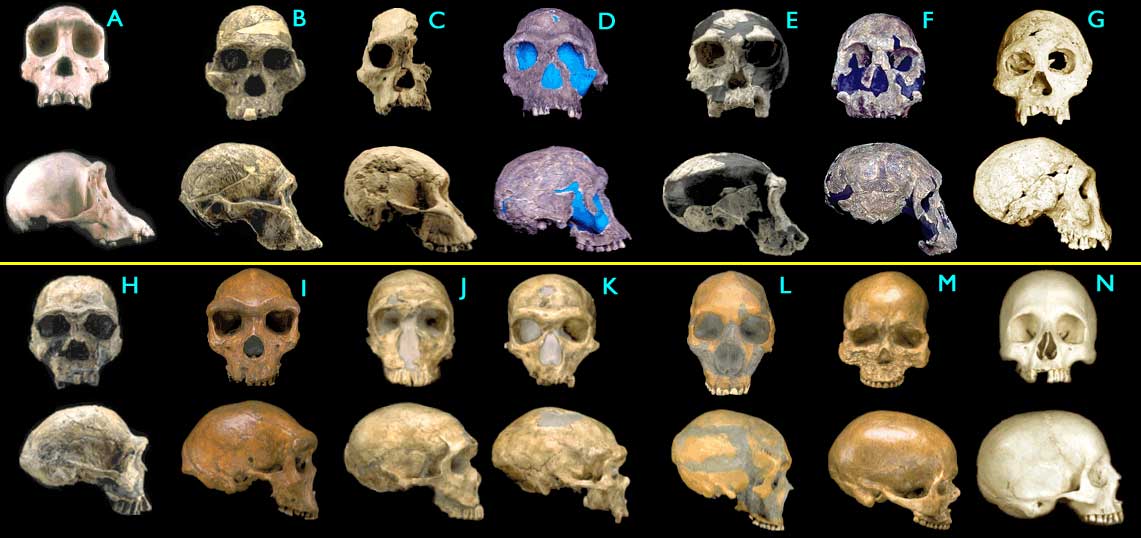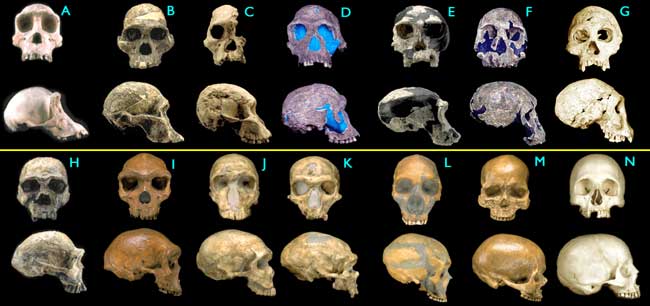
Posted on 03/02/2012 7:31:23 AM PST by Renfield
IT LOOKS like Neanderthals may have beaten modern humans to the seas. Growing evidence suggests our extinct cousins criss-crossed the Mediterranean in boats from 100,000 years ago - though not everyone is convinced they weren't just good swimmers.
Neanderthals lived around the Mediterranean from 300,000 years ago. Their distinctive "Mousterian" stone tools are found on the Greek mainland and, intriguingly, have also been found on the Greek islands of Lefkada, Kefalonia and Zakynthos. That could be explained in two ways: either the islands weren't islands at the time, or our distant cousins crossed the water somehow....
(Excerpt) Read more at newscientist.com ...

|
|
|
| GGG managers are SunkenCiv, StayAt HomeMother & Ernest_at_the_Beach | |

|
|
Thanks Renfield. |
|
|
|
|
That's a question for the old Laz.


just sayin'...
Almost, close, not exactly, really close but not quite.
All that neanderthal hair did close off the Strait. The resulting high water overcame the main power crystal in Atlantis.
The explosion wiped out everything. No more neanderthals. No more Atlantis. No more hairball.
In fact, the only survivors were 1.5 people in africa, 3 in Lapland, and 2 sacred black chickens.

What a bunch of nonsense.
Here are the real skulls.
Note that chimpanzees are item A, while very small progressions -- micro evolution -- take us to Neanderthals, from oldest to youngest, items J, K and L, before homo sapien sapiens, items M and N.

Figure 1.4.4. Fossil hominid skulls. Some of the figures have been modified for ease of comparison (only left-right mirroring or removal of a jawbone). (Images © 2000 Smithsonian Institution.)
Oral traditions replaced by the written word. And ever one knows book lernin' RULES.
Now we're going to talk about inbreeding...
Are you the guy with the weird hair?
Nah, I don’t have anywhere near that much hair.

yeh..that’s the ticket!
There aren’t any intermediate fossils. That was the whole point of punctuated equilibria.
Every fossil, without exception, is an "intermediate fossil" -- intermediate between its ancestors and its descendants.
And since minor DNA mutations are observed in every generation, no individual is genetically precisely the same as its ancestors or descendants -- it's "intermediate."
So lined up side by side, we can see in fossils of dozens of pre-human breeds, sub-species, species and genera, the "intermediate" nature of each one -- as they evolved from more chimpanzee-like ancestors ("A" below) to more human-like forms ("N" below).
"Punctuated equilibria" are explained by the fact that once a species has evolved to perfectly fit its environment, then every significant mutation will be for the worse, and so get weeded out by natural selection.
Only when the environment itself changes (becoming warmer, cooler, wetter, dryer or a new predator, etc.), can some mutations improve an individual's chance to survive and reproduce, and then a species can begin to evolve again.

The Fossils In General
"Despite the bright promise that paleontology provides a means of 'seeing' evolution, it has presented some nasty difficulties for evolutionists, the most notorious of which is the presence of 'gaps' in the fossil record. Evolution requires intermediate forms between species and paleontology does not provide them ..."
David B. Kitts, PhD (Zoology)
Head Curator, Dept of Geology, Stoval Museum
Evolution, vol 28, Sep 1974, p 467
"The curious thing is that there is a consistency about the fossil gaps; the fossils are missing in all the important places."
Francis Hitching
The Neck of the Giraffe or Where Darwin Went Wrong
Penguin Books, 1982, p.19
"The absence of fossil evidence for intermediary stages between major transitions in organic design, indeed our inability, even in our imagination, to construct functional intermediates in many cases, has been a persistent and nagging problem for gradualistic accounts of evolution."
Stephen Jay Gould, Prof of Geology and
Paleontology, Harvard University
"Is a new general theory of evolution emerging?"
Paleobiology, vol 6, January 1980, p. 127
"...Yet Gould and the American Museum people are hard to contradict when they say there are no transitional fossils ... I will lay it on the line, there is not one such fossil for which one could make a watertight argument."
Dr. Colin Patterson, Senior Paleontologist,
British Museum of Natural History, London
As quoted by: L. D. Sunderland
Darwin's Enigma: Fossils and Other Problems
4th edition, Master Books, 1988, p. 89
"We do not have any available fossil group which can categorically be claimed to be the ancestor of any other group. We do not have in the fossil record any specific point of divergence of one life form for another, and generally each of the major life groups has retained its fundamental structural and physiological characteristics throughout its life history and has been conservative in habitat."
G. S. Carter, Professor & author
Fellow of Corpus Christi College
Cambridge, England
Structure and Habit in Vertebrate Evolution
University of Washington Press, 1967
"The history of most fossil species includes two features inconsistent with gradualism: 1. Stasis. Most species exhibit no directional change during their tenure on earth. They appear in the fossil record looking much the same as when they disappear ... 2. Sudden Appearance. In any local area, a species does not arise gradually by the steady transformation of its ancestors; it appears all at once and 'fully formed'."
Stephen Jay Gould, Prof of Geology and
Paleontology, Harvard University
Natural History, 86(5):13, 1977
"But, as by this theory innumerable transitional forms must have existed, why do we not find them embedded in countless numbers in the crust of the earth?" (p. 206)
"Why then is not every geological formation and every stratum full of such intermediate links? Geology assuredly does not reveal any such finely graduated organic chain; and this, perhaps is the most obvious and gravest objection which can be urged against my theory (of evolution)." (p. 292)
Charles Robert Darwin
The Origin of Species, 1st edition reprint
Avenel Books, 1979
The Abundance of Fossils
"Darwin... was embarrassed by the fossil record... we are now about 120-years after Darwin and the knowledge of the fossil record has been greatly expanded. We now have a quarter of a million fossil species but the situation hasn't changed much. The record of evolution is still surprisingly jerky and, ironically, ... some of the classic cases of Darwinian change in the fossil record, such as the evolution of the horse in North America, have had to be discarded or modified as a result of more detailed information."
David M. Raup, Curator of Geology"Now, after over 120 years of the most extensive and painstaking geological exploration of every continent and ocean bottom, the picture is infinitely more vivid and complete than it was in 1859. Formations have been discovered containing hundreds of billions of fossils and our museums are filled with over 100-million fossils of 250,000 different species. The availability of this profusion of hard scientific data should permit objective investigators to determine if Darwin was on the right track. What is the picture which the fossils have given us? ... The gaps between major groups of organisms have been growing even wide and more undeniable. They can no longer be ignored or rationalized away with appeals to imperfection of the fossil record."
Field Museum of Natural History, Chicago
"Conflicts Between Darwin and Paleontology"
Field Museum of Natural History
Vol. 50, No. 1, (Jan, 1979), p. 25
Luther D. Sunderland (Creationist)
Darwin's Enigma: Fossils and Other Problems,
4th edition, Master Books, 1988, p. 9
"My attempts to demonstrate evolution by an experiment carried on for more than 40 years have completely failed. ... The fossil material is now so complete that it has been possible to construct new classes, and the lack of transitional series cannot be explained as being due to the scarcity of material. The deficiencies are real, they will never be filled."
Prof N. Heribert Nilsson
Lund University, Sweden
Famous botanist and evolutionist
As quoted in: The Earth Before Man, p. 51
varmintman quoting Gould:
Gould himself objected to the way Creationists were misconstruing his words, writing in May, 1981:
[For example] "The lower jaw of reptiles contains several bones, that of mammals only one.
The non-mammalian jawbones are reduced, step by step, in mammalian ancestors until they become tiny nubbins located at the back of the jaw.
The "hammer" and "anvil" bones of the mammalian ear are descendants of these nubbins.
How could such a transition be accomplished? the creationists ask.
Surely a bone is either entirely in the jaw or in the ear.
Yet paleontologists have discovered two transitional lineages of therapsids (the so-called mammal-like reptiles) with a double jaw joint—one composed of the old quadrate and articular bones (soon to become the hammer and anvil), the other of the squamosal and dentary bones (as in modern mammals).
"For that matter, what better transitional form could we expect to find than the oldest human, Australopithecus afarensis, with its apelike palate, its human upright stance, and a cranial capacity larger than any ape’s of the same body size but a full 1,000 cubic centimeters below ours?
If God made each of the half-dozen human species discovered in ancient rocks, why did he create in an unbroken temporal sequence of progressively more modern features—increasing cranial capacity, reduced face and teeth, larger body size?
Did he create to mimic evolution and test our faith thereby?
"Faced with these facts of evolution and the philosophical bankruptcy of their own position, creationists rely upon distortion and innuendo to buttress their rhetorical claim.
If I sound sharp or bitter, indeed I am—for I have become a major target of these practices....
"We proposed the theory of punctuated equilibrium largely to provide a different explanation for pervasive trends in the fossil record.
Trends, we argued, cannot be attributed to gradual transformation within lineages, but must arise from the different success of certain kinds of species.
A trend, we argued, is more like climbing a flight of stairs (punctuated and stasis) than rolling up an inclined plane.
"Since we proposed punctuated equilibria to explain trends, it is infuriating to be quoted again and again by creationists -- whether through design or stupidity, I do not know -- as admitting that the fossil record includes no transitional forms.
Transitional forms are generally lacking at the species level, but they are abundant between larger groups.
Yet a pamphlet entitled 'Harvard Scientists Agree Evolution Is a Hoax' states: 'The facts of punctuated equilibrium which Gould and Eldredge…are forcing Darwinists to swallow fit the picture that Bryan insisted on, and which God has revealed to us in the Bible.' "
Actually, the fossil record of pre-humans is chock full with dozens of "transitional forms" at the breed, sub-species and species levels.
Today it takes a willful act of ignorance to pretend otherwise.

Disclaimer: Opinions posted on Free Republic are those of the individual posters and do not necessarily represent the opinion of Free Republic or its management. All materials posted herein are protected by copyright law and the exemption for fair use of copyrighted works.